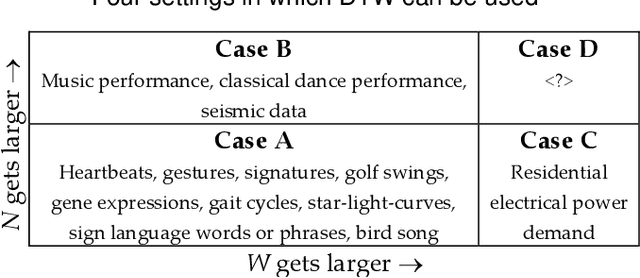FastDTW is approximate and Generally Slower than the Algorithm it Approximates
Paper and Code
Mar 25, 2020



Many time series data mining problems can be solved with repeated use of distance measure. Examples of such tasks include similarity search, clustering, classification, anomaly detection and segmentation. For over two decades it has been known that the Dynamic Time Warping (DTW) distance measure is the best measure to use for most tasks, in most domains. Because the classic DTW algorithm has quadratic time complexity, many ideas have been introduced to reduce its amortized time, or to quickly approximate it. One of the most cited approximate approaches is FastDTW. The FastDTW algorithm has well over a thousand citations and has been explicitly used in several hundred research efforts. In this work, we make a surprising claim. In any realistic data mining application, the approximate FastDTW is much slower than the exact DTW. This fact clearly has implications for the community that uses this algorithm: allowing it to address much larger datasets, get exact results, and do so in less time. Our observation also has a more sobering lesson for the community. This work may serve as a reminder to the community to exercise more caution in uncritically accepting published results.
 Add to Chrome
Add to Chrome Add to Firefox
Add to Firefox Add to Edge
Add to Edge